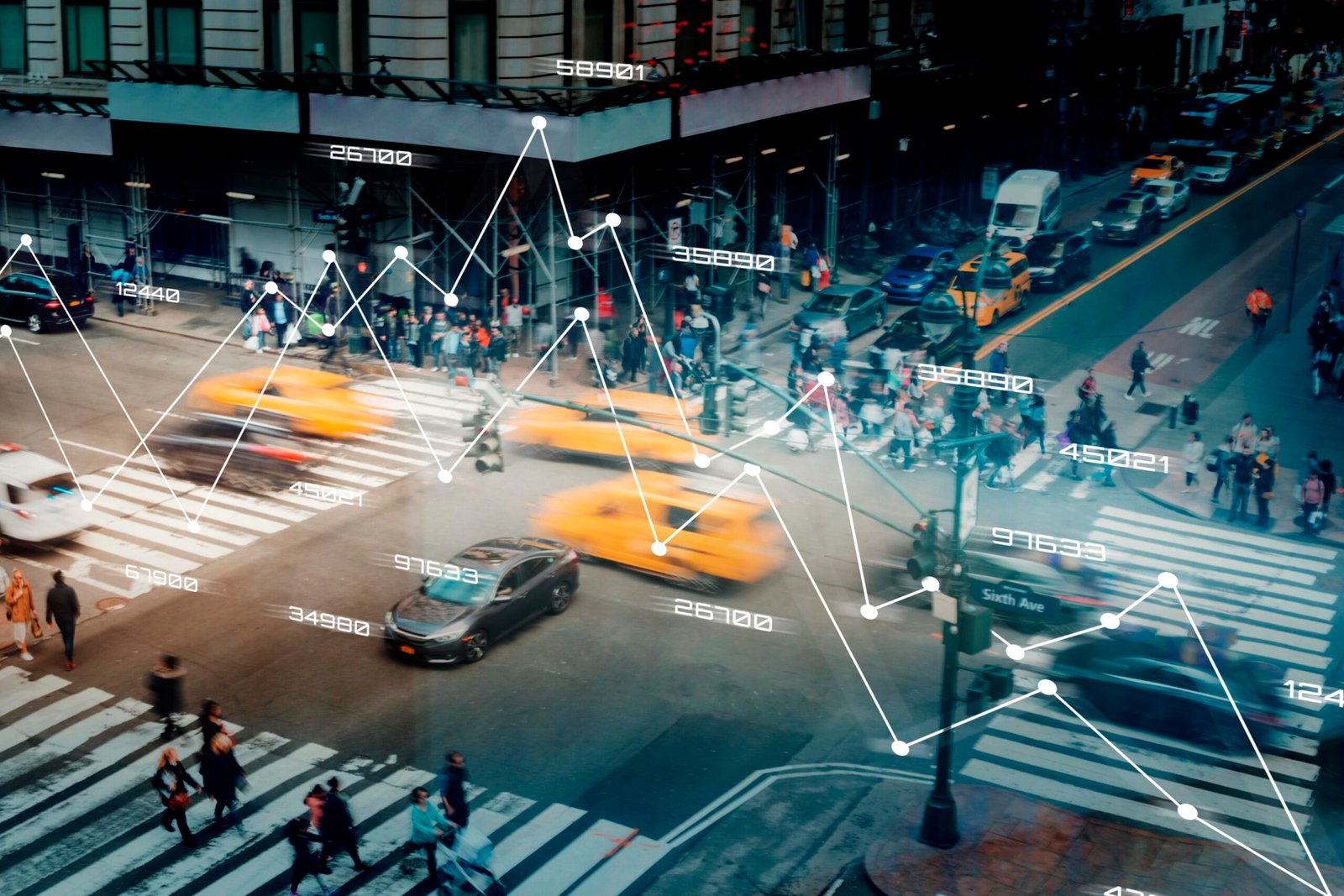Introduction to Global Traffic Technologies
In the changing transportation industry, global traffic technology is helping us traverse cities differently. These technologies use a variety of approaches to improve global traffic management efficiency, safety, and sustainability. AI-driven traffic analytics and improved signaling systems might transform urban transportation.
To better comprehend traffic technology worldwide, this article will discuss current developments, how they have enhanced urban transportation, and who is accountable for them. We will also examine the sector’s challenges, its environmental effect, and traffic technology’s potential to improve urban intelligence and quality of life.
What Innovations Are Driving Global Traffic Technologies?
Smart Traffic Management Systems
Recent technical developments in transportation have resulted in the development of intelligent traffic control infrastructure. They employ powerful algorithms and real-time data to improve traffic flow, decrease congestion, and promote road safety. Adaptive traffic signal control systems adjust light durations to improve traffic flow and eliminate delays.
Modern Signalling and Transmission Systems
Global traffic systems depend on developments in signal and communication technologies. Vehicle-to—everything (V2X) communication allows vehicles to interact with infrastructure and one another, hence enhancing drivers’ capacity to make informed choices and lowering of accident rates. Many smart city initiatives depend on this technology, which makes traffic control systems easily integrated.
Integration of AI and Machine Learning in Traffic Solutions
The use of artificial intelligence and machine learning in traffic solutions is a giant step forward for traffic technology on a worldwide scale. These advancements pave the way for predictive analytics, which in turn let systems optimize routes based on predicted traffic patterns. Machine learning algorithms, which learn from past data to enhance traffic predictions, enable more effective urban mobility solutions.
How Do Global Traffic Technologies Improve Urban Mobility?
Enhancing Traffic Flow and Reducing Congestion
When it comes to improving traffic flow and decreasing congestion, global traffic technology is vital. These systems can control traffic loads and dynamically change traffic lights using real-time data, making commutes smoother for everyone. Successful implementation of such devices has reduced travel times and emissions in cities like Los Angeles.
Impact on Public Transportation Systems
Global traffic technology significantly enhances public transportation networks. The amalgamation of these technologies may augment the dependability of public transportation networks, refine bus routes, and provide passengers with real-time information. An example of how the integration of many mobility modes into a single service might enhance accessibility and reduce dependence on personal vehicles is the Mobility as a Service (MaaS) initiative in Helsinki.
Case Studies of Successful Implementation
1.With modern road pricing mechanisms and smart traffic light systems that adapt to current traffic conditions, Singapore has established itself as an industry leader in efficient traffic management.
2. The “Superblocks” program in Barcelona, Spain, has transformed certain areas by putting pedestrians first, reducing traffic, noise, and pollution while increasing community interaction.
3.Hangzhou, China, employs rigorous monitoring and big data analysis to improve traffic safety and compliance, highlighting the potential of data-driven traffic management.
What Are the Key Players in the Global Traffic Technologies Market?
Major Companies and Their Contributions
The worldwide market for traffic technology is dominated by a few of large corporations. Siemens Mobility and Kapsch TrafficCom are two examples; the former provides integrated mobility management systems while the latter is renowned for adaptive traffic control solutions. When it comes to creating ground-breaking answers to the problems of urban transportation, these businesses are in the front.
Emerging Startups in the Traffic Tech Space
Also causing a stir in the traffic tech industry are up-and-coming companies. Waycare and Remix are just two examples of the data analytics and AI companies that are helping cities with traffic management. These young companies are leading the way in innovation and providing new ways of looking at traffic problems.
Collaborations and Partnerships Shaping the Industry
Global transportation technology has to advance by means of cooperation and alliances. Public-private partnerships between governments and IT companies help them to combine their resources and expertise. In this sense, people living in cities may cooperate to develop sensible traffic management strategies.
How Is Global Traffic Technologies Addressing Environmental Concerns?
Reducing Carbon Emissions Through Better Traffic Management
The lowering of carbon emissions is one significant advantage of global transportation technology for the environment. These gadgets help to minimize fuel consumption and greenhouse gas emissions by maximising traffic flow and lowering idle periods. These instruments assist to support the major objectives of sustainability and slow down of climate change.
Promoting Sustainable Transportation Solutions
By pushing public transportation, cycling, and walking, global traffic technology support environmentally friendly travel options. Like Barcelona’s “Superblocks,” citywide car-free zones enhance city life, lower pollution, and help to curb private vehicle usage.
Role of Traffic Technologies in Smart City Initiatives
Initiatives to make cities smarter, more efficient, and more pleasant to live in rely heavily on traffic technology. Integration of traffic management systems with other smart city components, such as public services and energy networks, can realize citywide enhancements to sustainability and quality of life.
What Challenges Does the Global Traffic Technologies Sector Face?
Regulatory and Compliance Issues
Due to regional differences in standards and criteria for new technology implementation, the worldwide traffic technologies industry encounters regulatory and compliance hurdles. To successfully navigate these challenges, regulatory organizations and industry stakeholders must work closely together.
Public Acceptance and Adoption Barriers
It is not always straightforward to get the general population to embrace and use traffic innovations. To win over the public and win their support for these technologies, we must address their concerns about data privacy, surveillance, and the possible effects on employment.
Technological Integration with Existing Infrastructure
New traffic technologies might be expensive and difficult to integrate with current infrastructure. The expense and meticulous planning required to retrofit cities with the essential equipment may pose a challenge for certain locations.
What Is the Future of Global Traffic Technologies?
Trends Shaping the Future of Transportation
Many events will shape transportation technology going forward all around. Many elements, like the spread of autonomous automobiles, the growth of connections via the IoT, and the rising emphasis on sustainability, are driving new traffic management systems’ development.
Predictions for Technological Advancements
Innovations in data analytics, sensor technologies, and artificial intelligence (AI) might greatly change transportation systems all around. Thanks to these developments, one may attain new mobility possibilities, better decision-making, and more accurate projections.
Strategic Initiatives for Long-Term Growth
If global traffic technology is to achieve success over time, they have to give sustainability, innovation, and collaboration top priority in their strategic goals. By means of R&D and cooperative development, the industry may address fresh challenges and seize fresh opportunities.
Conclusion
In today’s transportation networks, global traffic technologies are becoming more and more crucial. These technologies are influencing city futures all across the globe by improving urban transportation, solving environmental problems, and fostering creativity. However, we must resolve issues with integration, public approval, and regulation to fully realize their promise.
Finally, traffic management technologies on a worldwide scale are more than that; they are forces that can make cities smarter, greener, and more pleasant to live in. Those involved in traffic technology need to work together to make the most of these advancements in order to make a difference in cities that are always changing and expanding.













